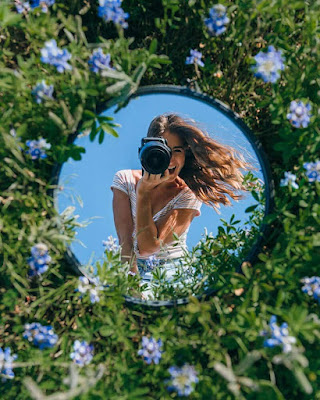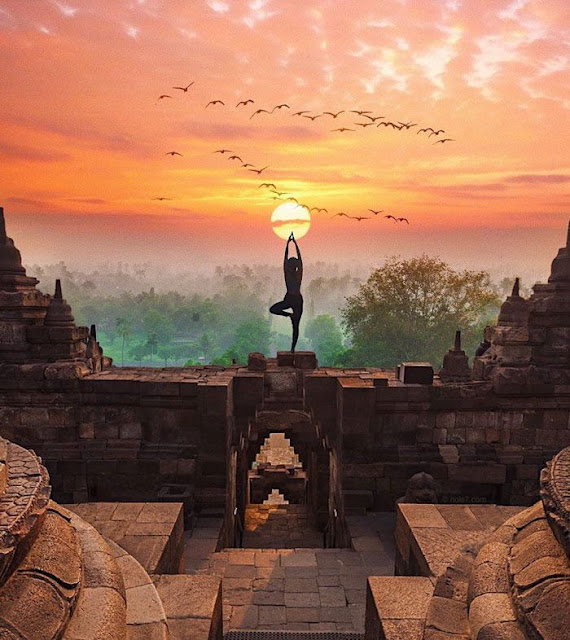Photography as Art: Capturing the World's Beauty Through the Lens"
Introduction
Photography, often referred to as the art of capturing moments, has evolved into a powerful medium of artistic expression over the years. Beyond merely documenting reality, photography has become a legitimate form of art that allows individuals to convey emotions, tell stories, and offer unique perspectives. In this article, we'll explore the world of photography as art, delving into its history, the creative process, and the impact it has on our lives.
 |
| photography as fine art |
The Evolution of Photography as Art
Photography as art didn't emerge overnight. It underwent a gradual transformation from a scientific invention to a creative endeavor. Here's a brief overview of its evolution:
1. Early Photography: Capturing Reality
In the early 19th century, pioneers like Louis Daguerre and William Henry Fox Talbot developed photographic processes, such as the daguerreotype and calotype, which allowed for the first permanent images. These early photographs were primarily documentary in nature, capturing scenes and people as they existed.
 |
| fine art photography |
2. Pictorialism: The Birth of Artistic Photography
In the late 19th and early 20th centuries, the Pictorialist movement emerged. Photographers like Alfred Stieglitz and Edward Steichen sought to elevate photography to an art form by emphasizing mood, atmosphere, and personal expression. Soft focus, alternative printing processes, and manipulated images became hallmarks of Pictorialist photography.
 |
| fine arts photography |
3. Modernism: Embracing Abstraction
With the advent of modernism in the early 20th century, photographers like Ansel Adams and Edward Weston pushed the boundaries of photography by embracing abstraction, sharp focus, and technical precision. Their work challenged the idea that photography could only be an interpretive medium.
 |
| art photography |
4. Contemporary Photography: A Multifaceted Art
Today, photography has evolved into a multifaceted art form with countless styles and genres. From street photography and portraiture to abstract and conceptual photography, artists continue to experiment with new techniques and technologies.
The Creative Process in Photography Art
Creating photographic art is a complex and deeply personal process that goes beyond clicking the shutter button. Here are the key elements of the creative process in photography:
1. Vision and Concept
Every powerful photograph begins with a vision or concept. Photographers often explore themes, emotions, or ideas they wish to convey through their work. This vision guides the entire creative process.
 |
| the history of photography |
2. Composition
Composition is a fundamental aspect of photography art. Photographers use elements like framing, balance, leading lines, and the rule of thirds to compose visually engaging and meaningful images.
 |
| artistic photography |
3. Lighting
Light is photography's most critical component. Photographers manipulate natural and artificial light to create mood, drama, and texture in their images. The way light interacts with a subject can dramatically alter its visual impact.
 |
| photography |
4. Technical Mastery
Understanding camera settings, such as aperture, shutter speed, and ISO, is essential for controlling exposure and achieving the desired visual effects. Technical mastery allows photographers to translate their creative vision into reality.
 |
| photography of art |
5. Post-Processing
In the digital age, post-processing has become an integral part of photography art. Photographers use software like Adobe Photoshop and Lightroom to enhance colors, contrast, and overall aesthetics while remaining true to their artistic vision.
 |
| photography as an art |
6. Storytelling
Photography often tells a story or conveys a message. Whether it's capturing a decisive moment on the street or creating a conceptual series, storytelling is at the heart of photography as art.
The Impact of Photography Art
Photography art has a profound impact on society and individuals alike. Here's how it influences our lives:
1. Preservation of Memories
Photography allows us to preserve and revisit cherished memories. Family portraits, travel photographs, and candid snapshots become invaluable records of our lives.
2. Raising Awareness
Photographers frequently use their art to raise awareness about social issues, environmental concerns, and cultural diversity. Documentaries and photojournalism can be powerful tools for social change.
3. Emotional Connection
Photography has the ability to evoke strong emotions and connect people across cultures and languages. A single photograph can convey a universal message of love, joy, sorrow, or resilience.
4. Expanding Horizons
Through photography, we can explore the world and gain insight into different cultures and environments. It broadens our perspectives and fosters empathy for others.
5. Self-Expression
For photographers, creating art is a form of self-expression. It allows them to communicate their thoughts, feelings, and unique viewpoints with the world.
6. Inspiration and Reflection
Photography inspires creativity and encourages reflection. Whether you're a photographer or an admirer of the art, photographs have the power to stimulate the imagination and provoke thought.
Photography as Art: A Personal Journey
To truly appreciate photography as art, one must embark on a personal journey. Whether you're a seasoned photographer or an enthusiastic novice, here are some steps to enhance your understanding and appreciation of photography:
1. Study the Masters
Explore the works of iconic photographers throughout history. Analyze their compositions, techniques, and the emotions they convey through their images.
2. Attend Exhibitions and Galleries
Visit photography exhibitions and galleries in your area. Seeing photographs in print and on display can provide a deeper connection to the art form.
3. Experiment and Learn
Don't be afraid to experiment with your camera and post-processing techniques. Learning from your successes and mistakes is an integral part of growth as a photographer.
4. Develop Your Style
Find your unique voice in photography. Whether it's street photography, landscapes, portraits, or abstract art, your style should reflect your personal vision.
5. Engage with the Community
Join photography clubs, online forums, and social media groups to connect with fellow photographers. Sharing your work and receiving constructive feedback can be immensely rewarding.
Photography is more than just a tool for capturing images; it is a form of art that has the power to inspire, inform, and evoke emotions. Through the creative process, photographers transform ordinary scenes into extraordinary works of art that resonate with viewers on a profound level. Whether you're a photographer or an admirer of the medium, photography art enriches our lives, expands our horizons, and reminds us of the beauty and complexity of the world we inhabit. It invites us to see, feel, and appreciate the visual poetry that surrounds us every day.

